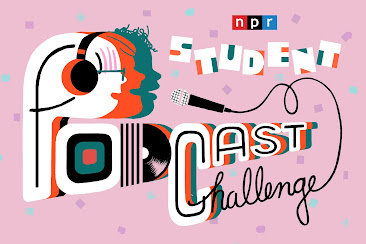Week 5 Blog Post: Digital Citizenship & Google Slides
This week in class we learned a lot new and exiting skills. We talked about ISTE Student Standard and Digital Citizenship as well as played around with Google sites. I enjoyed rewriting the standards in student terms. Check out what I came up with:
Digital Footprint: I can manage my online identity and understand that there are severe consequences if not managed properly.
**Online Behavior: I can engage in safe and ethical behavior when interacting online.
Intellectual Property: I can understand how to properly give others credit for their work.
Digital Privacy: I can manage my personal data online and understand that everything is tacked when navigating online.
During class we also toured google slides for our upcoming presentation. I enjoyed playing around with all that google slides offers. I can't wait to come up with a website to present to you all with my group. Now, lets chat about ISTE (2020) and safety teaching and learning strategies by Dickinson and Snedeker (2021).
For our Digital Citizenship Badge, I signed up for Online Behavior. I liked this topic because I believe everything in life starts with our behavior and how we treat others. Per the ISTE (2020) 1.2.b reads "Students engage in positive, safe, legal, and ethical, behavior when using technology, including social interactions online or when using networked devices." Our behaviors reflect our personality and ideas---this applies to online behavior just as it does in the real world. Teaching elementary students how to use the internet to their advantage, along with understanding the consequences of negatively related behavior is very important as a digital citizen. I look forward to incorporating digital citizenship into my future lessons as an elementary school teacher.
Dickinson and Snedeker emphasized some very important teaching and learning strategies in their article. The strategies mentioned in the article include: the use of relative narratives, storytelling with avatars and comics, problem solving with real life scenarios, and integrating research. In order to describe the best learning strategy, I feel like we have to think about which grade level is being taught. Personally, I would use the avatars and comics strategy for grades third through sixth. Comics are a great way to educate kids. They could create their own comics and avatars and share with the class. This strategy is great for teaching online behavior. Students can use these avatars to show their creativity all while learning how to be safe online with their peers. Students can create their comics or avatars and then show them to classmates via the online platform. We must educate our students about the importance of online safety and behavior(: hmm... wouldn't you like to create your own avatar?
Thanks for reading this week's blog, don't forget to check back next week!!
References:
https://www.iste.org/standards/iste-standards-for-students
https://www.edutopia.org/article/getting-kids-take-online-safety-seriously



I also wonder if having them create profiles, avatars, etc. could be a way to help them more deeply "own" their actions online and maintaining the behaviors and dispositions of digital citizenship.
ReplyDeleteHey Candice, thanks for sharing your thoughts about this week's class. Like you, I think that students would greatly benefit from creating avatars and comic strips to further understand these complex topics.
ReplyDelete